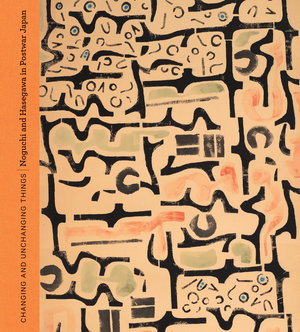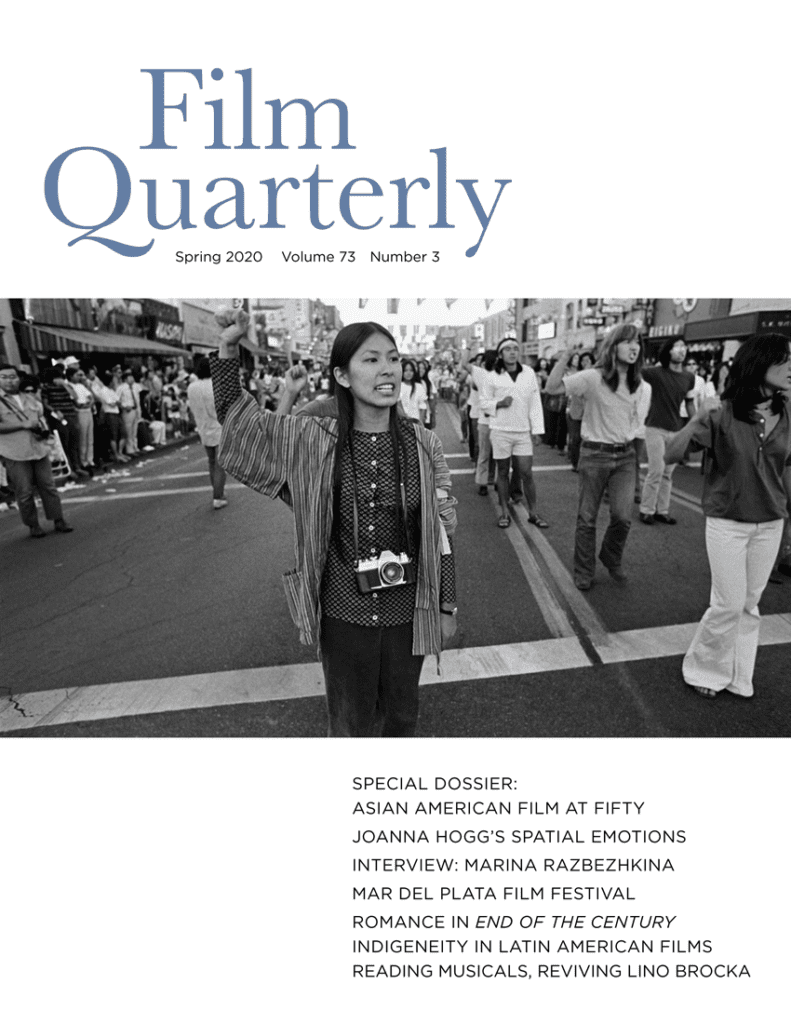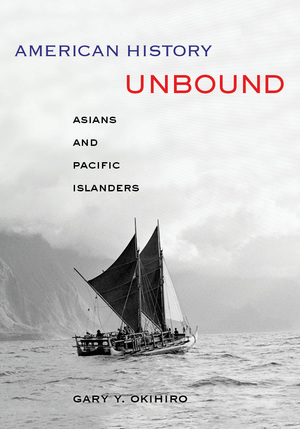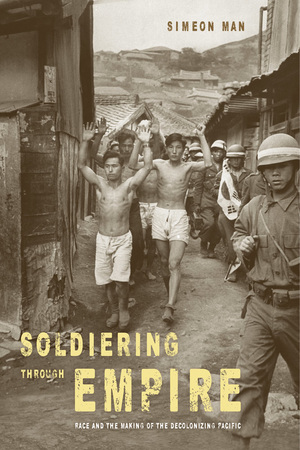For Asian Pacific American Heritage Month—celebrated in May to commemorate the arrival of the first Japanese immigrants to the United States on May 7, 1843 and to mark the anniversary of the transcontinental railroad completion on May 10, 1869—UC Press is proud to feature titles that honor and explore Asian Pacific American art, history, literature, and community.
Dictee
by Theresa Hak Kyung Cha
“I love the way it remains as radical a text as it was when I first found it, daring to hold a space open somewhere in between several genres, and to let tensions remain unresolved, or ambiguous, to pursue if not the articulation of the inarticulate, then, to let the reader experience what is inarticulate within themselves still in a space that makes room for it or even values it.”—Alexander Chee, Electric Lit
A classic work of autobiography that transcends the self, Dictée is the story of several women: the Korean revolutionary Yu Guan Soon, Joan of Arc, Demeter and Persephone, Cha’s mother Hyung Soon Huo (a Korean born in Manchuria to first-generation Korean exiles), and Cha herself. The elements that unite these women are suffering and the transcendence of suffering. Divided into nine parts structured around the Greek Muses, Cha deploys a variety of texts, documents, images, and forms of address and inquiry to explore issues of dislocation and the fragmentation of memory.

Changing and Unchanging Things
Noguchi and Hasegawa in Postwar Japan
by Dakin Hart and Mark Dean Johnson
In May 1950 Isamu Noguchi (1904–88) returned to Japan for his first visit in 20 years. The artist Saburo Hasegawa (1906–57) was a key figure for Noguchi during this period, making introductions to Japanese artists, philosophies, and material culture. By the time Hasegawa and Noguchi met, both had been thinking deeply about the balance between tradition and modernity, and indigenous and foreign influences, in the development of traditional cultures for some time. The predicate of their intense friendship was a thorough exploration of traditional Japanese culture within the context of seeking what Noguchi termed “an innocent synthesis” that “must rise from the embers of the past.”
American History Unbound
Asians and Pacific Islanders
by Gary Y. Okihiro
“Noteworthy are Okihiro’s attention to the relationship between racial discourse and the historical segregation of Asian and Pacific Islander migrant laborers; his detailed rendering of the history of Asians in the United States through the nineteenth century; and his attention to the ethnic and geographic diversity of the Asian American experience.”—Journal of World History
A survey of U.S. history from its beginnings to the present, American History Unbound reveals our past through the lens of Asian American and Pacific Islander history. In so doing, it is a work of both history and anti-history, a narrative that fundamentally transforms and deepens our understanding of the United States. Gary Y. Okihiro positions Asians and Pacific Islanders within a larger history of people of color in the United States and places the United States in the context of world history and oceanic worlds.
Soldiering through Empire
Race and the Making of the Decolonizing Pacific
by Simeon Man
“Tracing a genealogy of ‘good’ Asian soldiers and military workers in the Pacific world, and their differentiation from ‘bad’ Asian communists, anticolonial activists, labor radicals, and Asian enemies at war, the study situates Asia, Asians, and Asian Americans as central to the post-1945 global racial order, and the ‘decolonizing Pacific’ as the many anticolonial projects across Asia and in the Pacific Islands that were interrupted or impeded by U.S. imperial war.”—Lisa Lowe, author of The Intimacies of Four Continents
In the decades after World War II, tens of thousands of soldiers and civilian contractors across Asia and the Pacific found work through the U.S. military. Recently liberated from colonial rule, these workers were drawn to the opportunities the military offered and became active participants of the U.S. empire, most centrally during the U.S. war in Vietnam. Simeon Man uncovers the little-known histories of Filipinos, South Koreans, and Asian Americans who fought in Vietnam, revealing how U.S. empire was sustained through overlapping projects of colonialism and race making.

Trespassers?
Asian Americans and the Battle for Suburbia
by Willow Lung-Amam
“To a certain extent, Asian Americans and Silicon Valley have become synonymous in recent decades. Lung-Amam’s book provides a fresh and insightful perspective: how Asian Americans have transformed daily lives and neighborhoods, including demographic changes, education preferences and practices, shopping malls, and dwelling styles.” —Wei Li, Professor, Arizona State University, and Fulbright-Nehru Senior Scholar, Jawajarlal Nehru University
Over the past several decades, the Silicon Valley’s booming tech economy spurred rapid population growth, increased racial diversity, and prompted an influx of immigration, especially among highly skilled and educated migrants from China, Taiwan, and India. At the same time, the response to these newcomers among long-time neighbors and city officials revealed complex attitudes in even the most well-heeled and diverse communities. Trespassers? uncovers suburbia as an increasingly important place for immigrants and minorities to register their claims for equality and inclusion.

Home Bound
Filipino American Lives across Cultures, Communities, and Countries
by Yen Le Espiritu
“Discusses Filipino immigrants in San Diego and how they use their memories of their country to construct a new home in the United States.”—Chronicle Of Higher Education
Based on in-depth interviews with more than one hundred Filipinos in San Diego, California, Yen Le Espiritu investigates how Filipino women and men are transformed through the experience of migration, and how they in turn remake the social world around them. Her sensitive analysis reveals that Filipino Americans confront U.S. domestic racism and global power structures by living transnational lives that are shaped as much by literal and symbolic ties to the Philippines as they are by social, economic, and political realities in the United States.

Film Quarterly:
Special Dossier on “Asian American Film at Fifty
Film Quarterly’s special dossier on Asian American film history is occasioned by a cluster of anniversaries of the key institutions that gave rise, over the prior half century, to the field of Asian American Studies. This is the forty-fifth anniversary of New York’s Asian CineVision (ACV), which presents the annual Asian American International Film Festival, and the fiftieth anniversary of Visual Communications (VC), the Los Angeles–based media-arts collective. 2019 marked the fiftieth anniversary of the Asian American Studies Center at UCLA, which came of age in close partnership with the off-campus VC, and marks the fortieth anniversary of northern California’s CAAM, the Center for Asian American Media (formerly known as NAATA). Film Quarterly has taken up all four in this special dossier on the histories of the category of Asian American film and video, some of its key texts and practitioners, and numerous forgotten histories. These articles pay attention to the post-1968 moment when national politics, campus activism, independent filmmaking, video technologies, and an unprecedented concurrence of pan–Asian American consciousness all came together to create a newly self-aware cinema. We invite you to read the special dossier for free online through June 30, 2020. Also freely available is a webinar discussion about the dossier in which dossier co-editor Brian Hu and FQ’s editor B. Ruby Rich moderate a conversation on the landmark anniversary and ongoing legacy. With dossier contributors Lan Duong, Viola Lasmana, Josslyn Luckett, Melissa Phruksachart, and Oliver Wang.
Please consider supporting U.S. bookstores by purchasing online via Bookshop.org and Indiebound. Many, including Barnes & Noble, offer curbside pick-up as well.


